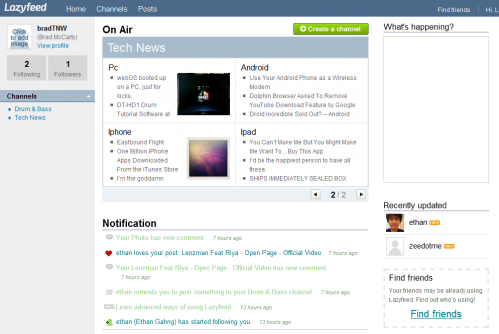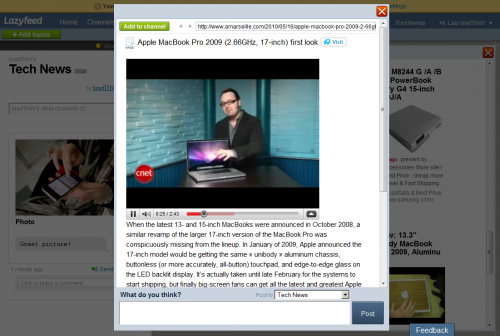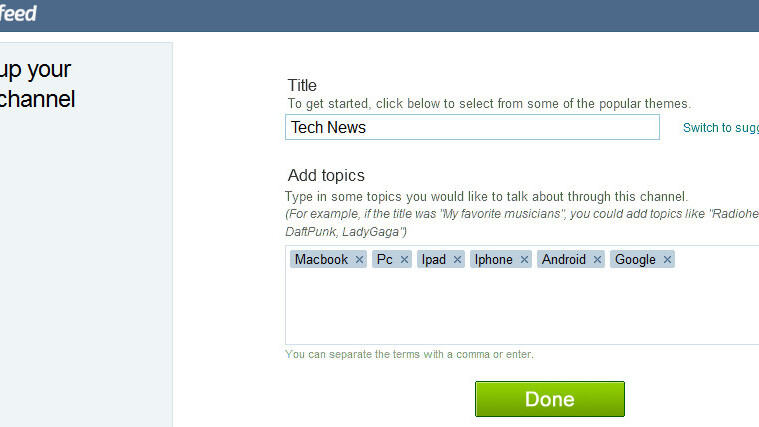
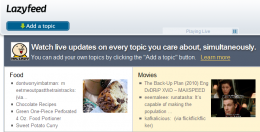 There are a lot of aggregation choices. Across the Internet, and especially over the past couple of years, we’ve seen literally hundreds of sites pop onto the radar and then into obscurity. Most of them had a couple things in common: noise and effort.
There are a lot of aggregation choices. Across the Internet, and especially over the past couple of years, we’ve seen literally hundreds of sites pop onto the radar and then into obscurity. Most of them had a couple things in common: noise and effort.
These sites required you to search out the good stuff, then once you found it you could have it delivered. But sometimes the good stuff came from people who would then tell you all about the perils of their lives, instead of the things you really cared about.
Lazyfeed takes a much more proactive approach to how you’ll gather information.
The site does indeed aggregate information, but it does it in a completely different way than we’ve seen before. Instead of you doing the work, Lazyfeed does it for you. You create a channel, put in some keywords and then sit back with an icy cold beverage.
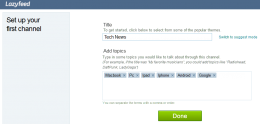 The interface of the site is very clean, but it takes a few minutes to really get things going. Luckily, there’s a click-by-click tutorial that will pop up as soon as you are registered and create your first channel.
The interface of the site is very clean, but it takes a few minutes to really get things going. Luckily, there’s a click-by-click tutorial that will pop up as soon as you are registered and create your first channel.
Once you’ve given your channel a name, then put in some keywords that interest you, Lazyfeed goes to work scouring the Internet for related content. It will put that content into a feed, gathered by subject, in your dashboard.
The “On Air” section is a rotating billboard of your channels, displaying the most recently found content. From here, you can click on anything displayed to go into the channel itself.
 Once you’re in the channel, the options really start to get fun. Let’s say that I click the top left story about the Apple MacBook Pro. I can read the snip within Lazyfeed, or click a link to go directly to the story itself. In this case, it’s a video review, so the video is embedded directly on my Lazyfeed page. If I think it’s cool, I can post it to my personal feed, add comments and then let the discussion begin.
Once you’re in the channel, the options really start to get fun. Let’s say that I click the top left story about the Apple MacBook Pro. I can read the snip within Lazyfeed, or click a link to go directly to the story itself. In this case, it’s a video review, so the video is embedded directly on my Lazyfeed page. If I think it’s cool, I can post it to my personal feed, add comments and then let the discussion begin.
Discussion? Ah yes, indeed. The other half of Lazyfeed is a full-blown social outlet where you can find (and invite) friends through Facebook and Twitter integration. You can also search to see if some of your friends are already using the service. Once you’ve added friends, you can check out their channels and bookmark things that are interesting to you. Friends can leave comments, bookmark or choose to “Love” something, but that information is contained only within Lazyfeed and is never publicly shown.
This is where Lazyfeed really stands apart. Instead of having to watch everything that a friend says, your stream (known as the Treadmill) is driven entirely by things that you’ve told Lazyfeed that you’re interested in. So if you’ve bookmarked someone’s story about an iPod, but they then spend the rest of their time posting things related to gardening, you’re not overwhelmed with their noise.
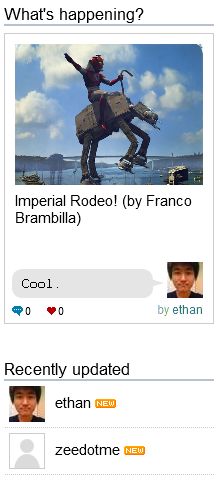 While you’re on your Dashboard, Lazyfeed will be showing you the things that you’re subscribed to, and it will use the far right side to give you a bit of insight as to what your friends are up to as well. It’s unobtrusive, but easily enough clicked if something sparks your interest.
While you’re on your Dashboard, Lazyfeed will be showing you the things that you’re subscribed to, and it will use the far right side to give you a bit of insight as to what your friends are up to as well. It’s unobtrusive, but easily enough clicked if something sparks your interest.
I talked to the developer, at length, and he gave me some interesting insight. As I was trying to find out how Lazyfeed was different, here was his response:
“Think of it as a casual blog, where you can talk about every interesting aspect of your personality. This used to be very inefficient therefore no one did this, because no one has enough time to wander around the Web searching and browsing for every topic they love. Now, anyone can do this with Lazyfeed because everything you love comes to you instead.”
Lazyfeed likely won’t replace every RSS reader in use, but it’s not supposed to. We typically use RSS to find updates to sites that we already know about. Lazyfeed’s goal is to find information on topics that we love, and provide it to us in the easiest way possible. When it comes to that goal, this app is anything but lazy.
Get the TNW newsletter
Get the most important tech news in your inbox each week.
